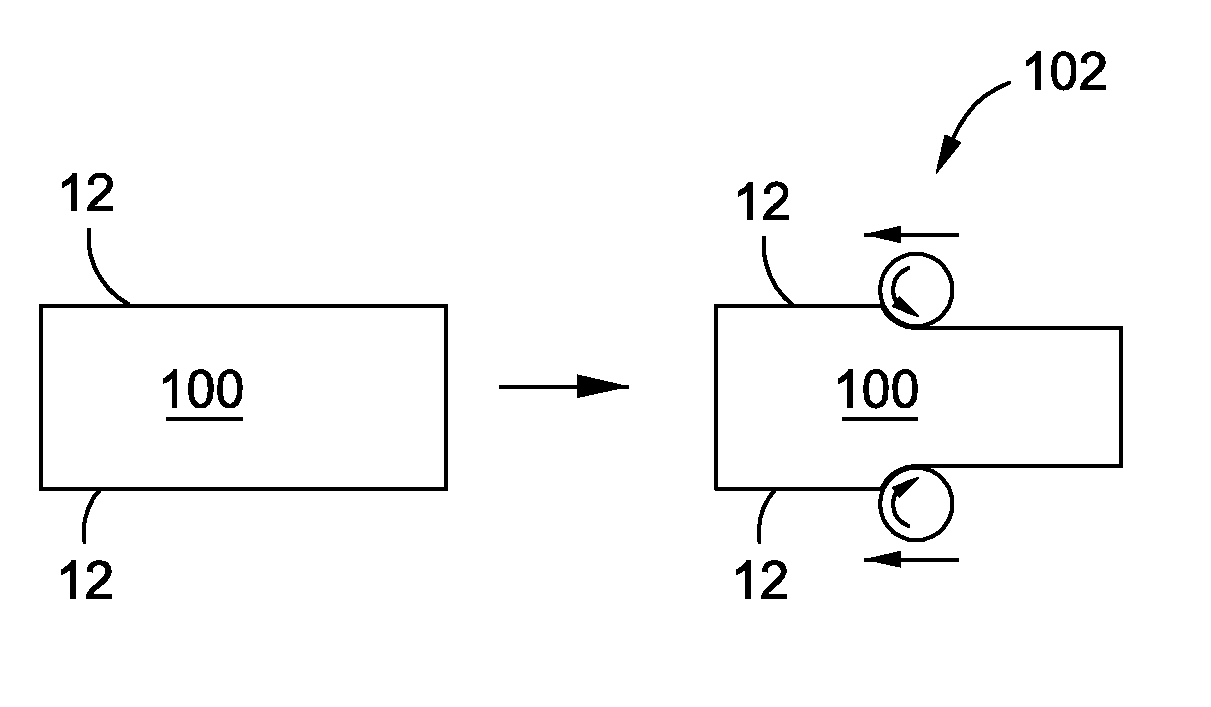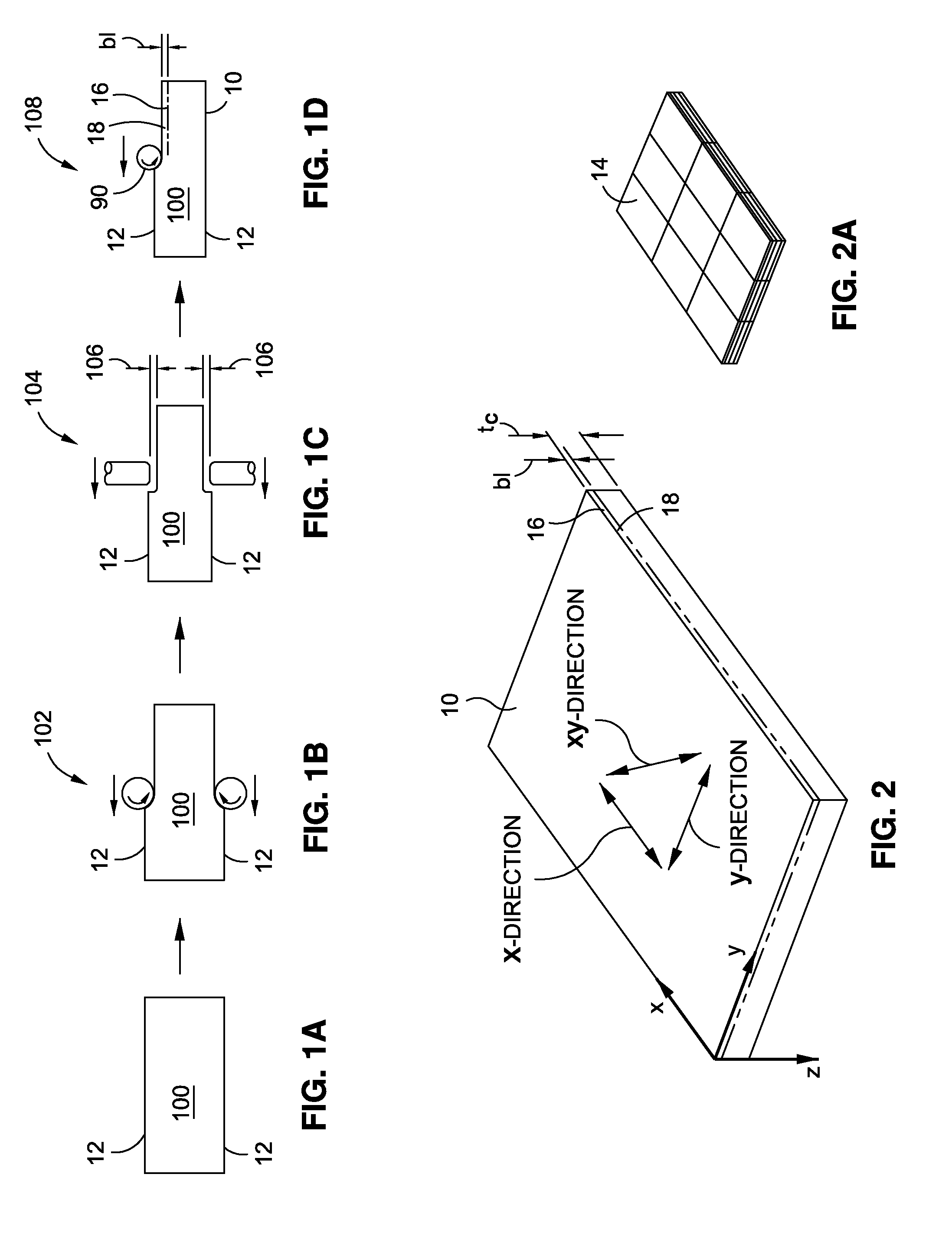Stress function calibration method
a function and stress technology, applied in the field of stress function calibration, can solve the problems of expensive and time-consuming inspection and reworking, shorten the fatigue life of the workpiece, and distortion is another undesirable
- Summary
- Abstract
- Description
- Claims
- Application Information
AI Technical Summary
Benefits of technology
Problems solved by technology
Method used
Image
Examples
Embodiment Construction
[0051]Referring now to the drawings wherein the showings are for purposes of illustrating preferred and various embodiments of the disclosure, shown in FIGS. 1A-1D is a schematic illustration of a sequence of operations for fabricating a plate coupon 10 (FIG. 2) from plate stock 100 (FIGS. 1A-1D). A selected manufacturing operation 108 (FIG. 1D) may be performed on one of opposing surfaces 12 of the plate coupon 10. In an embodiment, the selected manufacturing operation 108 may comprise a machining operation using a rotary cutting tool 90 as shown in FIG. 1D. The selected manufacturing operation 108 may induce residual stress 18 along the coupon surface 12 as shown in FIG. 1D and FIG. 2. The induced residual stress 18 may be measured in each one of an x-direction, a y-direction and an xy-direction (FIG. 2). Measurements of induced residual stress 18 may be performed by any suitable technique including, but not limited to, x-ray diffraction. The induced residual stress measurements 5...
PUM
 Login to View More
Login to View More Abstract
Description
Claims
Application Information
 Login to View More
Login to View More - R&D
- Intellectual Property
- Life Sciences
- Materials
- Tech Scout
- Unparalleled Data Quality
- Higher Quality Content
- 60% Fewer Hallucinations
Browse by: Latest US Patents, China's latest patents, Technical Efficacy Thesaurus, Application Domain, Technology Topic, Popular Technical Reports.
© 2025 PatSnap. All rights reserved.Legal|Privacy policy|Modern Slavery Act Transparency Statement|Sitemap|About US| Contact US: help@patsnap.com



